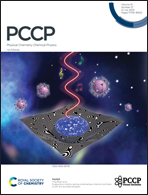Atomistic insight into the binding mode and self-regulation mechanism of IsPETase towards PET substrates with different polymerization degrees†
Abstract
Poly(ethylene terephthalate) (PET) is one of the most widely used synthetic polyesters, however, its extensive use creates a long-term environmental burden. Unlike traditional recycling methods, biodegradation is a sustainable strategy. The emergence of PETase from Ideonella sakaiensis 201-F6 (IsPETase) has brought great potential for the industrialization of degradable PET. In this work, models of enzyme–substrate complexes with different degrees of polymerization were established to study the binding mode using molecular dynamics simulation. We found that the whole binding site can be further subdivided into three parts, including head, middle and tail binding regions. Most importantly, the presence of the middle region formed by both ends of Ser93 and Ser236 provides a potential possibility for the binding of substrates with different chain lengths, and exerts the self-regulation ability of enzymes to accommodate substrates. Meanwhile, the ‘pocket bottom’ Arg280 in the tail region echoes the ‘pocket mouth’ Trp185 in the head region, defining the substrate binding region. This work reveals the self-regulation of IsPETase, as well as the key residues for the substrate binding. The solution to these problems enables us to better understand the function of enzymes and design high-performance degradation enzymes, which is of great significance for industrial application research.



 Please wait while we load your content...
Please wait while we load your content...